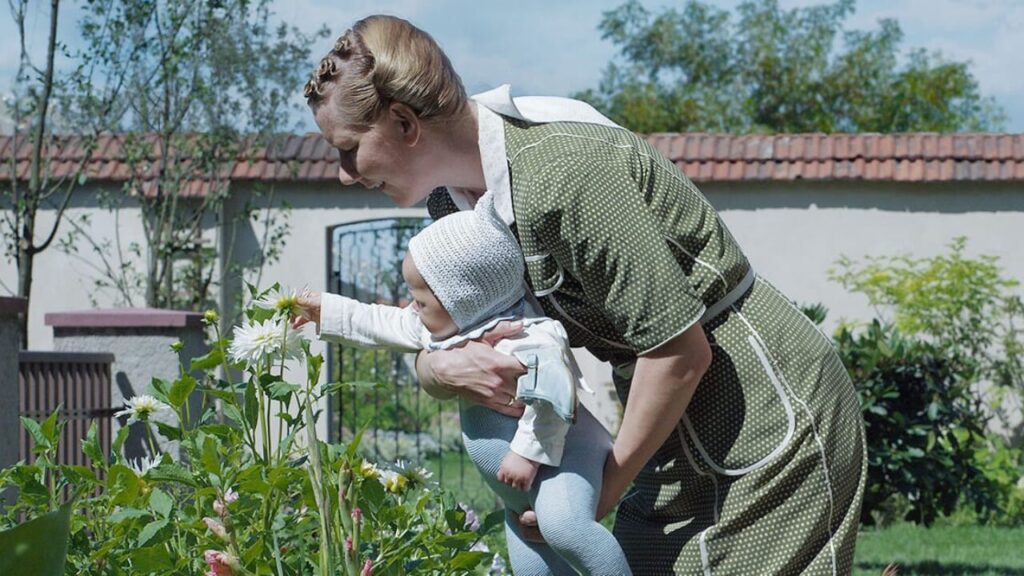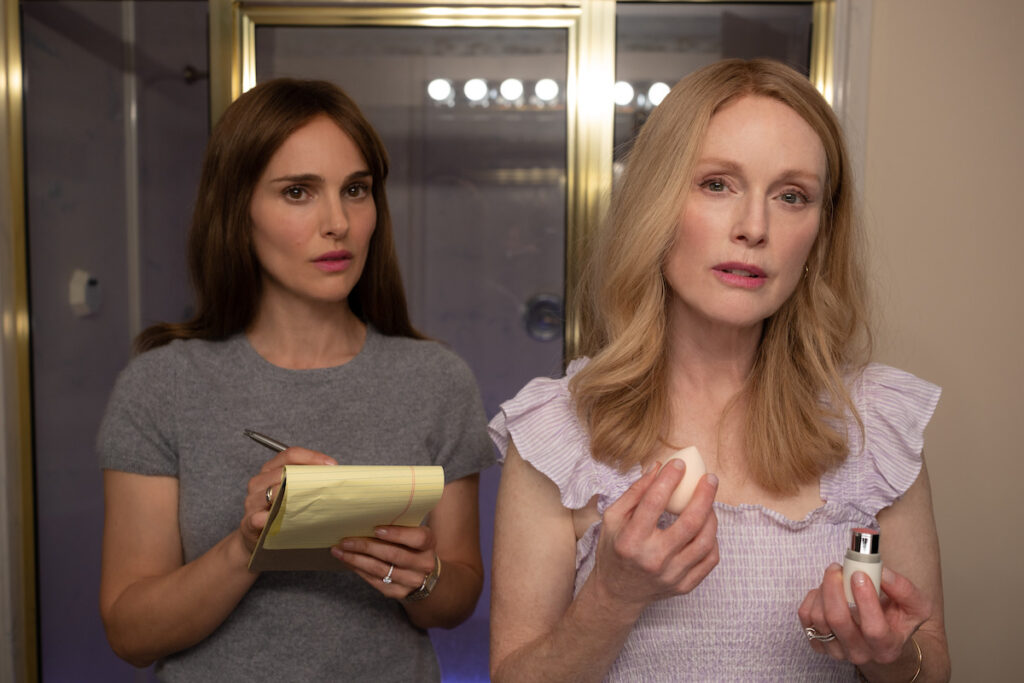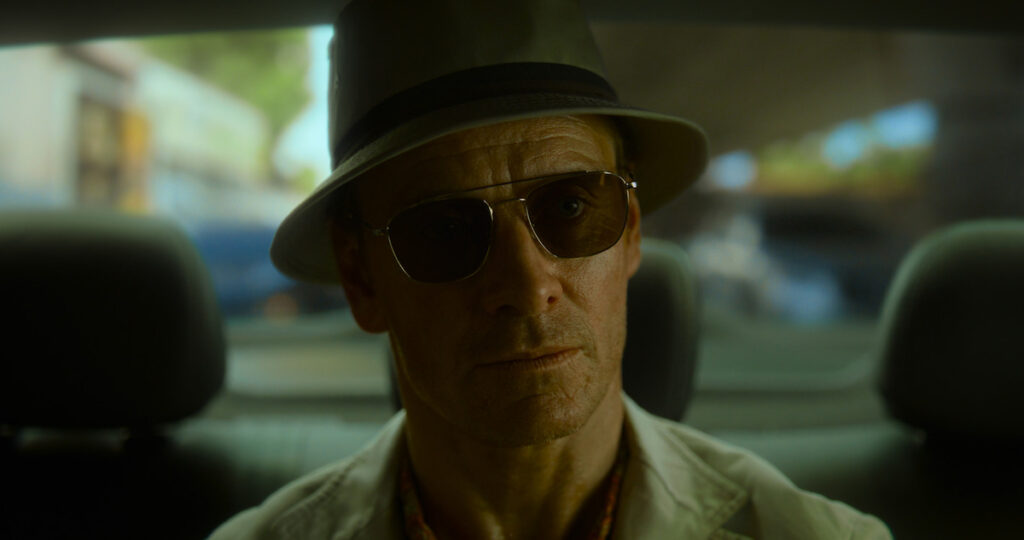The Zone of Interest: Heart of Gas

The music speaks the truth. Strip away The Zone of Interest’s first few minutes—a grim overture in which Mica Levi’s doomy, dissonant score aches and seethes against a black screen—and you might suspect that you’ve stumbled into a gentle movie of bucolic bliss. The first image we see is that of a happy-looking family lounging lazily in a meadow. As a stream gurgles nearby, the children traipse along a dirt path, the sun glinting down on their golden hair. Their parents seem entirely relaxed, suggesting a life of comfort and security. Perhaps they’re on vacation, or maybe just enjoying a weekend picnic. Even after they return to their home, a cozy cottage with a carefully tended garden and a small in-ground pool, it takes some time before you pick up on the curious nature of their surroundings: the razor wire atop the large wall in the background, the smoke billowing from distant chimneys, the muffled echoes of gunfire and screams.
Adapted by Jonathan Glazer from a novel by Martin Amis, The Zone of Interest is decidedly a movie about the Holocaust. But it is also not a Holocaust picture—at least, not in the way the subgenre has traditionally been understood. There are no ghastly scenes of extermination, no heroic feats of endurance and survival, no condemnatory speeches, no comeuppance or catharsis. There is simply the pervasive aroma of death, and the people willfully oblivious to its stench. Read More




